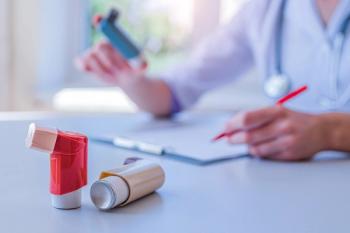
How to help kids face trauma
Many children face trauma at some point in their lives, but training on resilience and open communication can help.
Children who face early traumatic experiences at home are at risk of a host of emotional, physical, and behavioral problems, but pediatricians can help guide families toward resilience skills that can help.
Christina D. Bethell, PhD, professor and director of the Child and Adolescent Health Measurement Initiative (CAHMI) at the Johns Hopkins Bloomberg School of Public Health, Baltimore, Maryland, says childhood trauma and toxic stress are common factors across many child, adolescent, and young adult health risks and problems.
“Knowing about adverse childhood experiences (ACEs) can help pediatricians address common roots of child well-being,” Bethell says. “Tools to assess ACEs and follow-up with education, supports, and interventions are available.”
Bethell says
The goal of the research is to advance action supported by the evidence to address childhood adversity and promote positive health and well-being for children and families, says Bethell. The first step is to raise awareness.
More than 38% of children in every state have been affected by at least one ACE, from the loss of a parent to being a victim of violence, according to the report. In 16 states, about 25% of children have experienced 2 or more ACEs.
The report used data from the 2016 National Survey of Children’s Health that was analyzed by the Robert Wood Johnson Foundation in collaboration with the CAHMI at the Johns Hopkins Bloomberg School of Public Health.
According to this report, 33% of children with 2 or more ACEs have a chronic health condition requiring special healthcare needs compared with 13.6% of children who have not experienced ACEs. Researchers note that, nationally, 46% of children aged younger than 18 years have had at least 1 ACE, and 20% have had 2 or more. The prevalence of ACE rises as children age, with 35% of children aged 5 years and younger experiencing at least 1 ACE compared with 55.7% of children aged 12 to 17 years. Difficulty in meeting family needs because of income and parental divorce or separation made up half of all ACEs reported in the study at 25% each. Nine percent of children lived with someone with a drug or alcohol problem; 8.2% had a parent or guardian spend time in jail; and 7.8% lived with someone who was mentally ill, depressed, or suicidal.
The report broke down prevalence of ACEs by state, with percentages ranging from 38.1% of children facing ACEs in Minnesota compared with 55.9% in Arkansas. The study also investigated other demographics, noting that white children are less likely to face ACEs than black or Hispanic children, with 41% of white children facing ACEs compared with 51% of Hispanic children and 64% of black children. Income plays a role, too, with 62% of children with incomes below 200% of the federal poverty level reporting at least 1 ACE. However, 26% of children at or above 400% of the poverty level also report at least 1 ACE. Children aren’t the only ones affected, either. According to the report, just 2 in 5 mothers of children with ACEs are in good physical or mental health.
Adverse childhood experiences can have serious, long-term, negative impacts on a child’s health and well-being, according to the report. High levels of stress and trauma can take a toll physically, socially, emotionally, and cognitively. The report also notes that the
According to the report, children aged 3 to 5 years with 2 or more ACEs are more than 4 times more likely to have multiple social and emotional challenges that can impact learning. More than 75% of children aged 3 to 5 years who were asked to stay home or expelled from preschool had ACEs, and children aged 6 to 17 years with ACEs were twice as likely as children without them to be disengaged in school. Additionally, about two-thirds of children aged 6 to 17 years who bully other children, or who are bullied themselves, have had at least 1 ACE, the study notes.
There is hope for improvement, the report suggests, and having some sort of support and resilience training can help. Children who were taught to stay calm and in control when faced with challenges were 3 times more likely to remain engaged in school and are half as likely to be diagnosed with an emotional, mental, or behavioral problem. Even something as simple as talking it out can help. Children with 2 or more ACEs whose parents report sharing ideas and talking about problems were almost 3 times more likely to demonstrate resilience and children whose parents have positive communication with healthcare providers were 1.5 times more likely to practice resilience skills with their children. These skills can include eating family meals together, reading to children, limiting screen time, and not using tobacco at home.
Bethell says she hopes her research will spark interest among others to learn more about and begin to address ACEs, and to promote positive health in practice.
“Many primary care-based efforts exist and the simple discussion of ACEs and helping families begin to heal is a powerful intervention in itself,” she says. “Families show interest in discussing ACEs and their family and child’s social and emotional concerns and aspirations.”
Newsletter
Access practical, evidence-based guidance to support better care for our youngest patients. Join our email list for the latest clinical updates.







